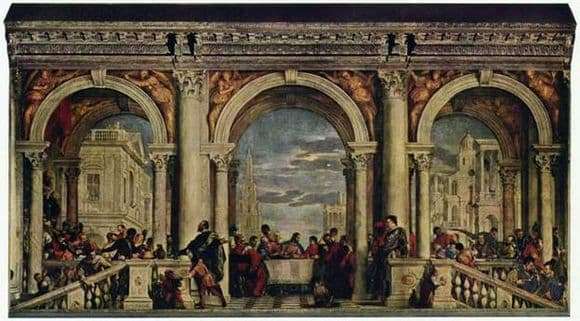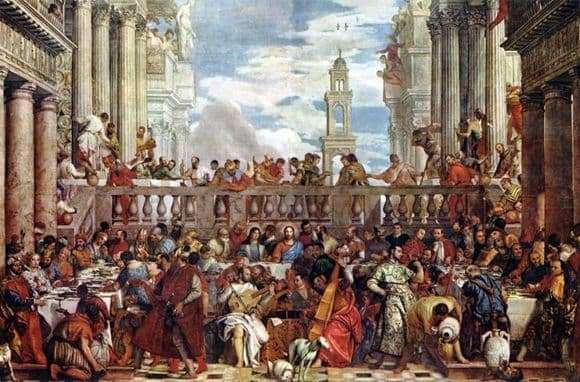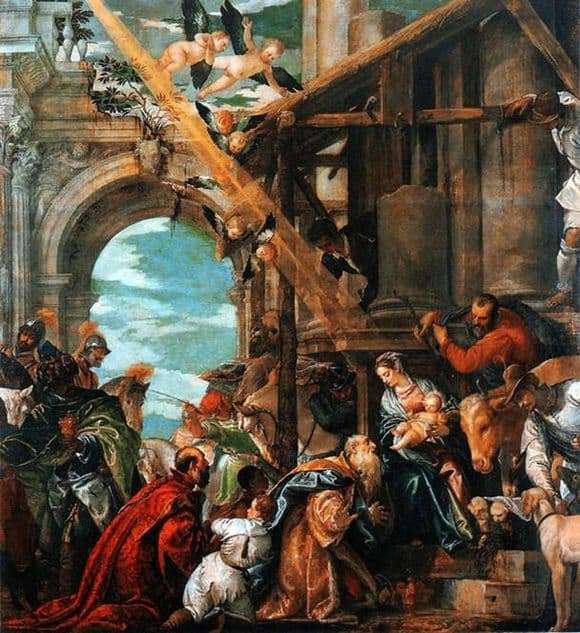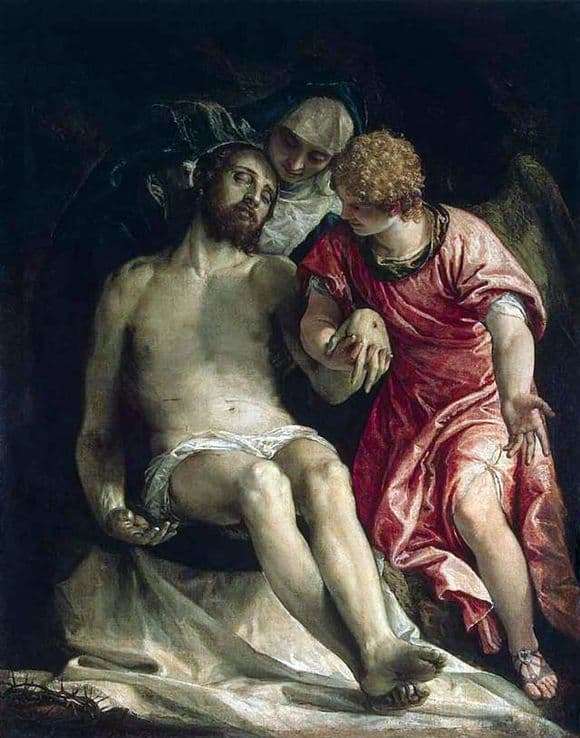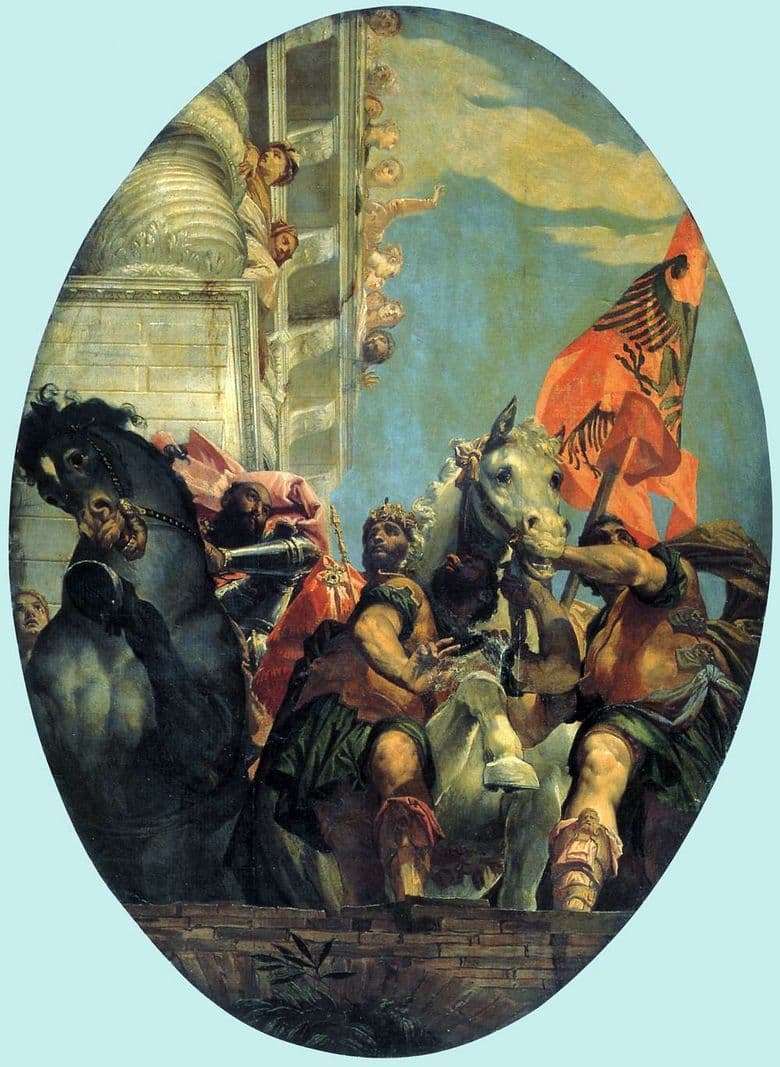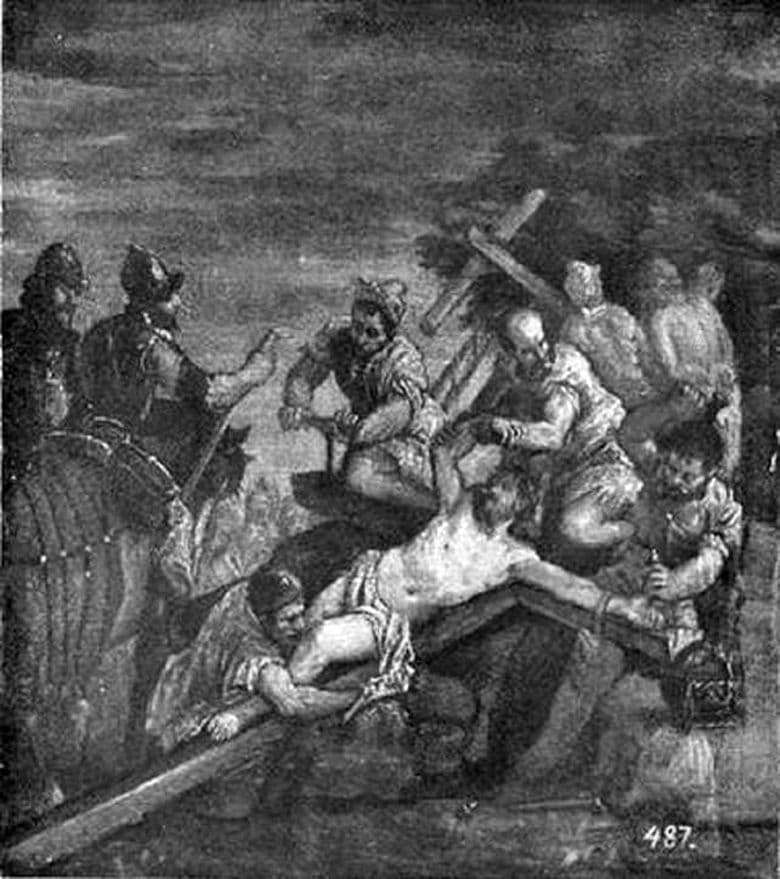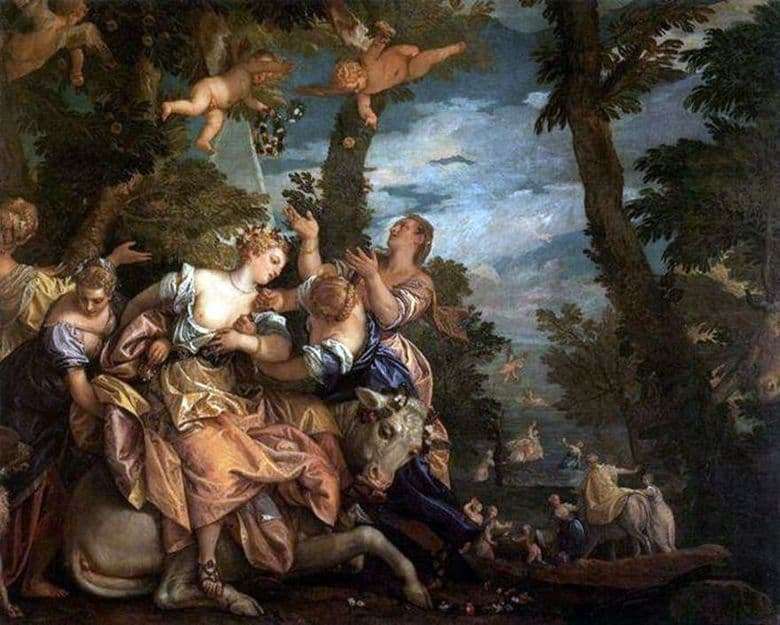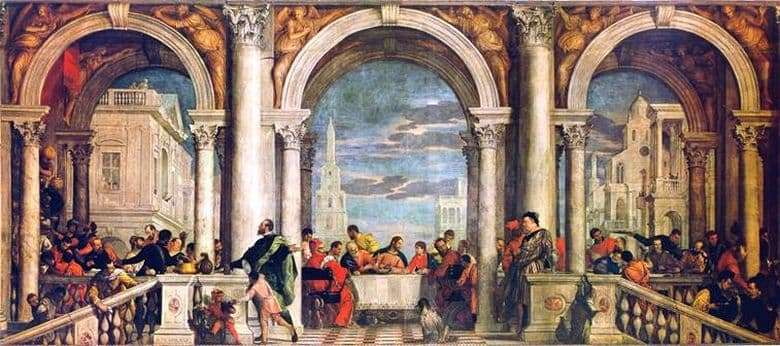
This is a huge canvas size 5.5×12.8 meters. Which carries in itself another name – “Feast in the house of Levi”. The artist gave the second name to his picture in connection with the request of the investigator.
Painting Paolo Veronese reached our days in its original appearance. On it we can observe the figure of the artist himself. Veronese portrayed himself in a bright green jacket. His image breathes generosity and dignity. What were inherent in him in real life, when the artist had to defend his case.
Against the backdrop of the magnificent buildings of the Renaissance, graceful and wealthy halls with arches and large white columns, which are made in the style of the fifteenth century, fit an innumerable elegant society.
Absolutely everyone in this picture is dressed in the chic clothes of the time. In addition to Jesus Christ and Mary Magdalene. Also on the canvas you can see the hunting dogs, the Sultan of Turkey and the Negro dwarfs in a colorful dress.
Veronese did not try to convey the historicity of the event. For him, the main thing was to make the picture beautiful and conspicuous. The “feast in the house of Levi” became such. In this composition, all the guests behave quite freely and loudly. Their gestures are rude and absolutely free.
In the picture there is an obvious element of triumph. It is expressed in a solemn atmosphere and its stately scale. This can be observed in the pose of Christ and in the gestures of other people, when they lift the vessels with red wine. The Eucharistic symbolism also plays a big role here, which is manifested in dressing the lamb at the table, bread…
The composition is filled with a diverse set of colors that are included in the set of characters – Turkish representatives, black dwarfs, guards, aristocrats, jesters and even hunting dogs. And in the very center of the canvas is Christ himself. Judas was not only at the other end of the table from the main character, but according to the artist’s intention was completely turned away.
Description of the painting by Paolo Veronese “The Last Supper”
